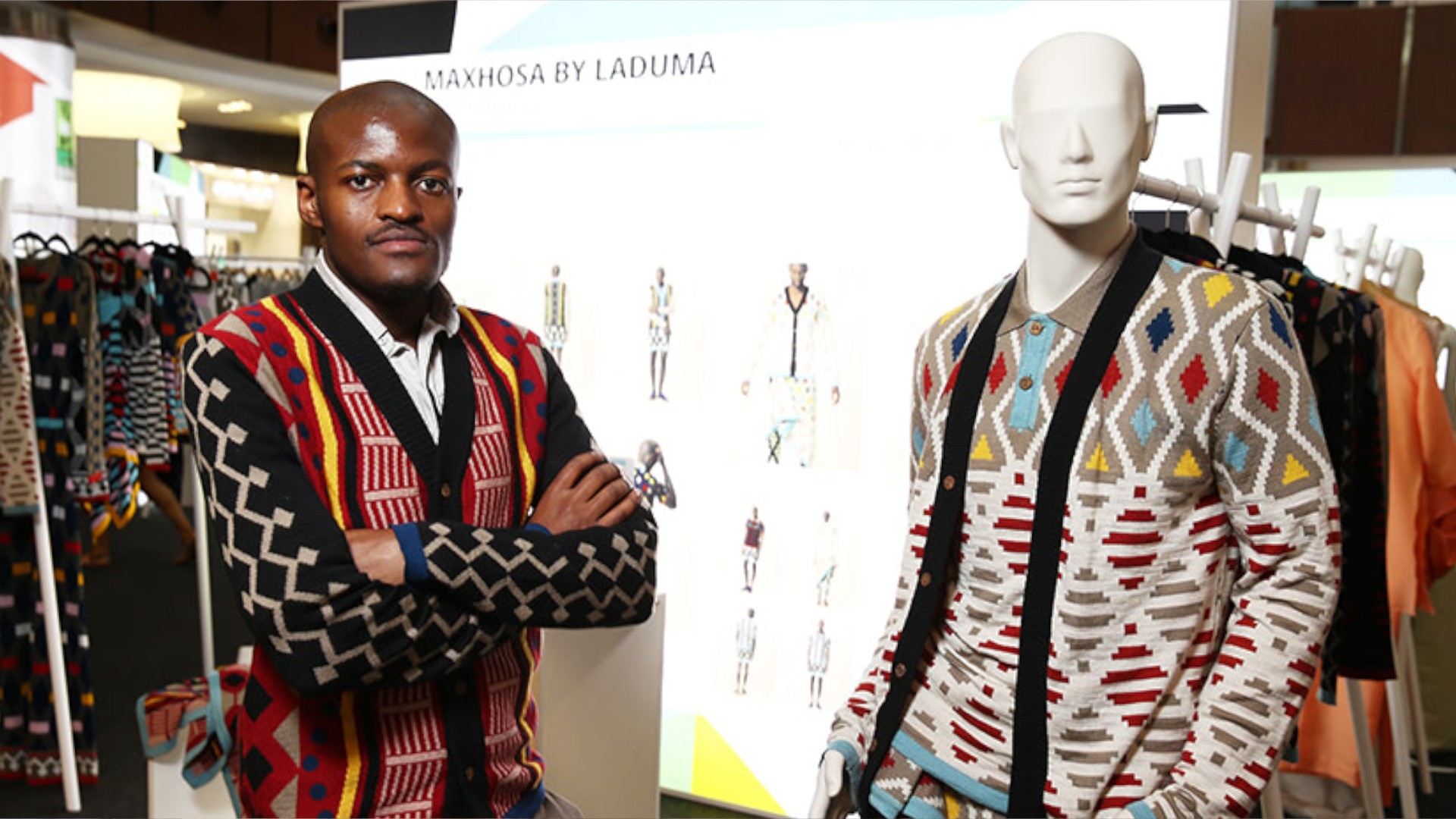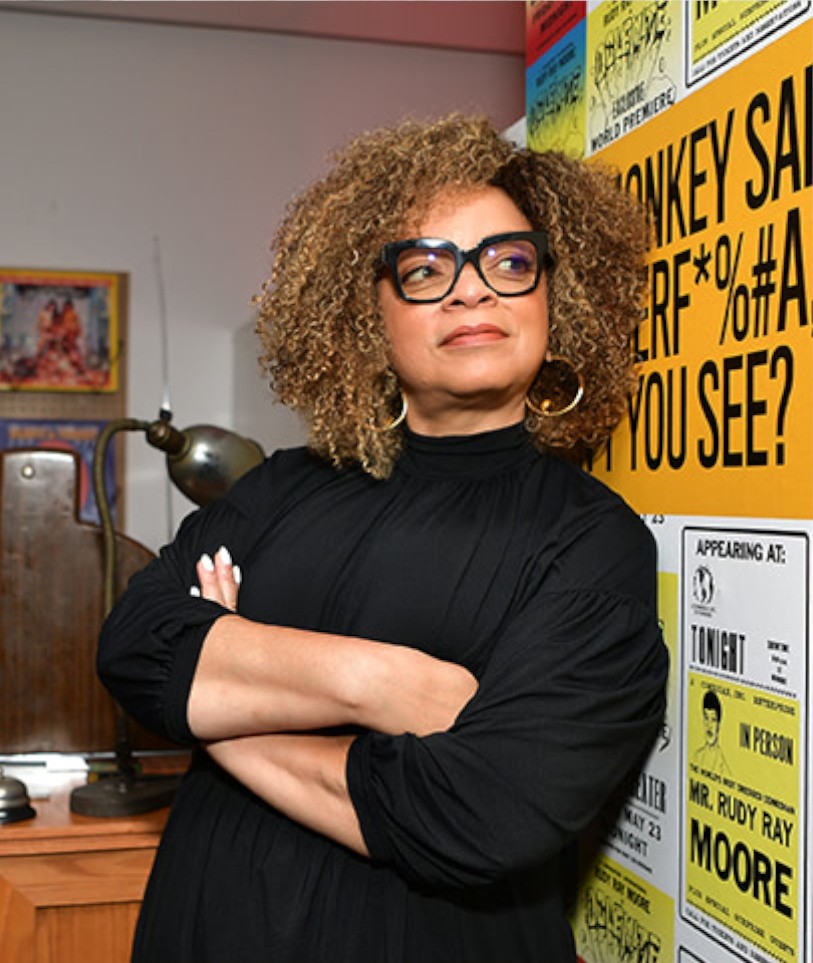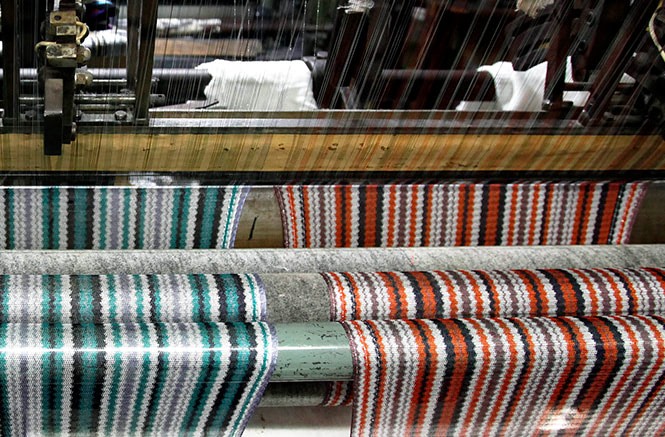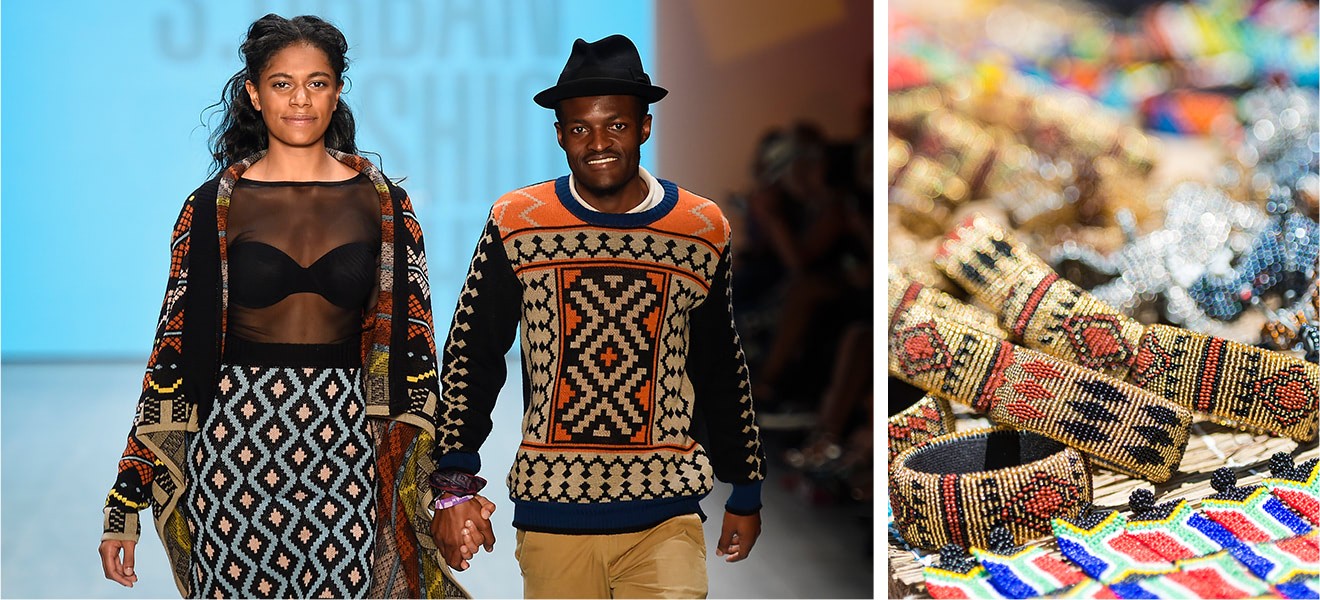Our tool for managing your permission to our use of cookies is temporarily offline. Therefore some functionality is missing.

COMING 2 AFRICA.
As the groundbreaking exhibition Ruth E. Carter: Afrofuturism in Costume Design in the US considers the legendary costume designer’s African inspirations, we take a closer look at the meaning of her collaborations with SA fashion designers.
Earlier this year, if you happened to be watching Coming 2 America, Eddie Murphy’s sequel to the 80s culture-clash comedy about a fictional African prince seeking a wife in the US, you might have spotted some familiar-looking knitwear gracing the royal wardrobe. Murphy’s character prominently wore jerseys by local designer Laduma Ngxokolo.
The best costumes in the movies often help convey something fundamental about the character who wears them. Ngxokolo’s designs, under the banner MaXhosa Africa, have their genesis in a student project. Xhosa initiation ceremonies often involve young initiates receiving a high-quality jersey or similar item. Brands such as Pringle and the like became the go-to for aspirational initiates, a marker of pride signalling one of life’s major transitions.
The best of both worlds
‘As much as South African style will always remain firmly rooted in African soil, we of course do find ourselves calling upon global perspectives to source freshly relatable ideas and produce cutting-edge trends. At the same time, let’s not forget that our continent has served as an inspiration to the catwalk elite. Well-referenced textiles and shapes have been a dominant feature of worldwide fashion weeks alongside many an international trend.
Another infinite style resource is most definitely the meeting point of our unique architecture – modern, structured facets stem from fluid, traditional designs and together, they result in something very exciting. All of it is very exciting, really, especially the way Mzanzi style keeps elevating – we should be proud of the colourful nature of our unique style.’
Ngxokolo’s idea was to create high-quality homegrown knitwear, every bit as desirable as their imported counterparts, but referencing local cultures. Drawing on traditional Xhosa beadwork patterns, he designed beautifully and strikingly patterned knitwear designs that leveraged local cultural capital to make something that could be worn with pride. As much as the whole ethos and approach of MaXhosa Africa had its roots in local tradition, perhaps the secret of Ngxokolo’s success was that he dared to envision a contemporary Xhosa look oriented towards an African future.
With that in mind, it’s not surprising to discover that the person responsible for the costume design for Coming 2 America is none other than Ruth E. Carter, who won an Oscar for her work on Black Panther. Carter is a Hollywood legend. She has nearly four decades of work under her belt, starting with early Spike Lee films (her work is particularly notable in Do the Right Thing) and running the gamut all the way via dressing Oprah Winfrey in Selma to Denzel Washington in Malcolm X, and taking in the likes of Steven Spielberg’s Amistad along the way.
The golden thread running through this stellar career, and picked up in the exhibition of her costumes currently showing at the SCAD FASH Museum of Fashion + Film in Atlanta in the US, is precisely what she saw in MaXhosa Africa. The exhibition is called Ruth E. Carter: Afrofuturism in Costume Design. It explores the social and cultural power Carter has harnessed in her costume designs, particularly her ability to imagine the look of a future Africa.
While she admits that opportunities like Black Panther don’t come along every day, and the work she is currently doing on the sequel is an expansion of that original vision rather than a fresh opportunity to invent a new world, her work has been remarkably consistent in finding ways to express social, political and personal change through dress/clothing.
IT’S AMAZING HOW MEANINGFUL IT IS, BEING AN AFRICAN-AMERICAN, TO CONNECT TO SOMETHING REAL FROM AFRICA AND PUT IT IN A MOVIE.
While much of her work with Spike Lee has concentrated on sartorial expression of African-American culture, Coming 2 America, and particularly Black Panther, shifted her emphasis to the African continent itself.
Black Panther presented an opportunity to invent visions of a fantasy African future. The city of Wakanda was envisioned as wealthy, technologically advanced and matriarchal. The characters were regal and the portrayal of Africa generally unlike anything produced by Hollywood before. The all-too-common tropes of poverty and colonial hangovers were nowhere in evidence. The cultural significance of the vision Black Panther presented cannot be understated.
While Carter drew on at least a dozen African cultures for inspiration, including the likes of the Maasai and the Tuareg, South Africans were particularly delighted by the instantly recognisable inspiration drawn from Basotho blankets, Ndebele neck rings and Zulu headdresses.
Carter’s real gift is for recognising a modern contemporary moment in local design (as evident in Ngxokolo’s work) and leveraging its future-oriented approach. She reframed local design traditions as aspirational on global media platforms.
It creates an opportunity for self-determination: a vehicle for a decolonised future through the power of representation.
Coming 2 America might not have quite the same cultural clout as Black Panther, but it certainly uses South African fashion to help portray a big-screen fictional vision of an African country with style and sophistication. Alongside Ngxokolo’s designs, SA designer Palesa Mokubung of the label Mantsho also designed costumes for the film.
There’s definitely something to be said for the step Carter has taken towards commissioning South African designers – living and working on the continent – rather than simply imitating them from afar. Not only does it give the on-screen presence of the characters a dimension of authenticity that would not have been possible otherwise, but it also gives local designers a global platform for progressive representations of local design. It’s also, as Carter said before Coming 2 America was launched on Amazon Prime Video in March, about respect for African design.
“It’s amazing how meaningful it is, even for me, being an African-American, to connect to something real from Africa and put it in a movie and show the world: ‘This is part of South African culture’ or ‘This is from the Lesotho people’. It makes it so much more meaningful; it has so much more depth,” she told BBC Culture.



